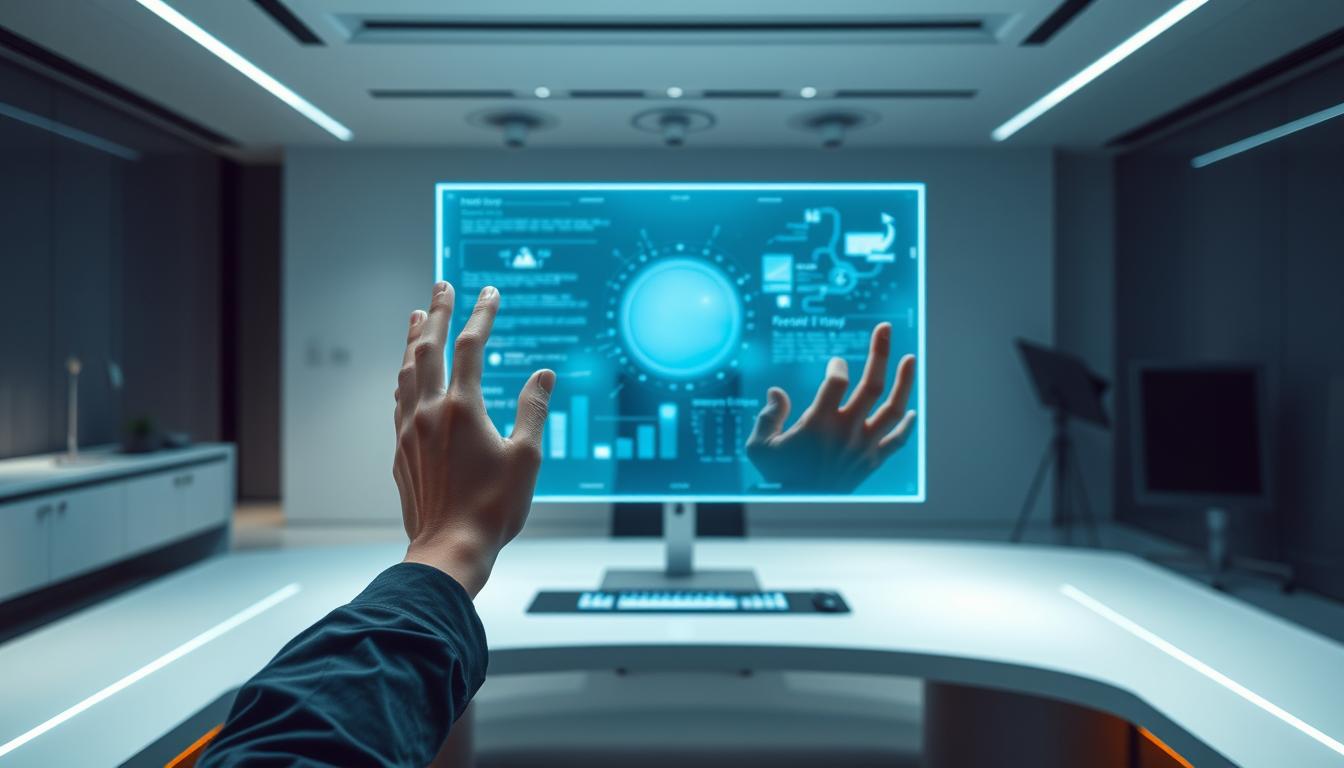
How New Technology Impact Human Computer Interactin (HCI)
New Technology Impact Human Computer Interactin (HCI) the way we interact with computers is changing a lot. New digital technologies make it easier and more natural to use computers.
User experience design has been key in making this change. It helps us use complex systems without getting lost. As we explore new ways to interact with computers, it’s important to see how these changes affect our lives.
Key Takeaways
- The digital transformation is changing the landscape of human-computer interaction.
- User experience design is critical in creating intuitive interfaces.
- Advances in technology are driving innovation in HCI research.
- Understanding human-computer interaction is vital for future technological advancements.
- The impact of new technologies on HCI is far-reaching and multifaceted.
Understanding the Human Technology Impact (HCI) Revolution
Technological advancements are changing fast. It’s key to grasp the HCI revolution for better user interfaces. We must spot the main technological changes that are changing HCI.
Identifying Key Technological Shifts in HCI
Several shifts are leading the HCI revolution. These include AI, ML, and IoT devices. Each tech is making interfaces smarter and easier to use.
AI and ML let systems learn from us and adjust. This makes our experience more personal. IoT devices also broaden HCI, making it work with many smart devices.
| Technological Shift | Impact on HCI | Example |
|---|---|---|
| Artificial Intelligence (AI) | Personalized user experience through predictive analytics | Virtual assistants like Siri and Alexa |
| Machine Learning (ML) | Adaptive interfaces that learn from user behavior | Recommendation systems on streaming services |
| Internet of Things (IoT) | Expansion of HCI to smart devices and environments | Smart home devices controlled via voice or app |
Measuring the Effects on User Experience Design
The changes in technology deeply affect user experience design. Designers now think about a whole system of devices and interfaces. They need to understand how people use technology in different ways.
Adding AI and ML to interfaces means designers must be more advanced. They aim for smooth and easy interactions. So, we need new ways to measure how well these designs work.

By knowing these changes and their effects, designers can make interfaces that are both intuitive and user-friendly. They can use new technologies to their fullest.
How to Leverage Emerging Technologies for Better Interfaces
To stay ahead in the digital world, it’s key to use new tech to make user interfaces better. These new tools don’t just make things easier for users. They also set a new standard for how we interact with digital products.
Implementing AI and Machine Learning in User Interfaces
AI and machine learning are changing how we use digital products. They make interfaces smarter and more personal. This means users get a better experience.
| Technology | Application | Benefit |
|---|---|---|
| AI | Predictive Analytics | Enhanced User Experience |
| Machine Learning | Personalized Recommendations | Increased User Engagement |
Utilizing Virtual and Augmented Reality for Enhanced Interaction
Virtual and augmented reality are making digital experiences more real. They let developers create worlds that feel like the real thing. This makes interactions more immersive.

Integrating Voice and Gesture Recognition Effectively
Using voice and gesture recognition is changing how we interact with devices. It lets users control things with their voice or gestures. This makes using devices feel more natural.
- Voice recognition enables hands-free control.
- Gesture recognition allows for more expressive interactions.
- Combining both technologies enhances the overall user experience.
By using new technologies well, developers can make interfaces that are more fun and easy to use. This makes digital products better for everyone.
Steps to Apply Human-Centered Design with New Technology
Human-centered design is key in making new tech meet user needs. It aims to create products that are easy to use and offer a good experience. By using this design, developers can make tech that’s both new and easy for users.
Conducting User Research for Technological Innovations
User research is a big part of human-centered design. It helps understand what users need and want. For new tech, it spots problems and areas to improve. Methods like interviews and usability tests give insights into how users act.
Good user research leads to tech that fits user needs better. This makes the user experience better overall.
Performing Usability Testing on New Interfaces
Usability testing is key in human-centered design for new tech. It tests the tech with real users to find issues. This way, developers can fix problems they might have missed.
Usability testing makes sure tech is easy to use. This lowers the chance of users getting frustrated or leaving.
Ensuring Accessibility in Advanced Digital Environments
Accessibility is vital in human-centered design, especially in digital spaces. It means making tech for everyone, including those with disabilities. By adding accessibility features, developers can reach more people.
Accessibility should be thought of from the start to the end of design. Following guidelines like WCAG ensures tech is usable by all.
Conclusion
Technology keeps changing how we interact with computers. It’s important to understand this for better user interfaces. By focusing on user needs and design, we can make things easier to use.
Using new technologies well is key. We should make sure these technologies work for everyone. This way, everyone can use and enjoy them.
The future of computer interaction looks bright. We’ll see more AI, virtual reality, and voice recognition. Keeping usability in mind will help make technology better for everyone.
FAQ
How is new technology changing the way we interact with computers?
New tech is making our interactions with computers better. It’s introducing interfaces that are easier to use and more fun. This includes AI, machine learning, virtual reality, and voice recognition.
What role does user experience design play in the development of new technologies?
User experience design is key in making new tech. It makes sure the interfaces are easy to use and meet user needs. This improves how we interact with digital products.
How can emerging technologies like AI and machine learning be leveraged for better user interfaces?
AI and machine learning can make interfaces more personal and smart. They learn from how we use them. This makes our experience better.
What is the importance of usability testing in the development of new interfaces?
Usability testing is vital. It helps find and fix problems in interfaces. This makes them easier to use and keeps users happy.
How can developers ensure accessibility in advanced digital environments?
Developers can make digital spaces accessible by following guidelines. They should also test with different users and assistive tech. This helps find and fix barriers.
What is human-centered design, and how does it apply to new technology development?
Human-centered design focuses on what users need. It ensures new tech is made with the user in mind. This leads to interfaces that are easy and fun to use.
How does technological advancement impact human-computer interaction trends?
New tech changes how we interact with digital products. It introduces new ways like voice and gesture recognition. It also makes interfaces more advanced and personal.
What is the significance of understanding the impact of new technology on human-computer interaction?
Knowing how new tech affects us is important. It helps create interfaces that are easy and meet our changing needs. This improves our overall experience.



